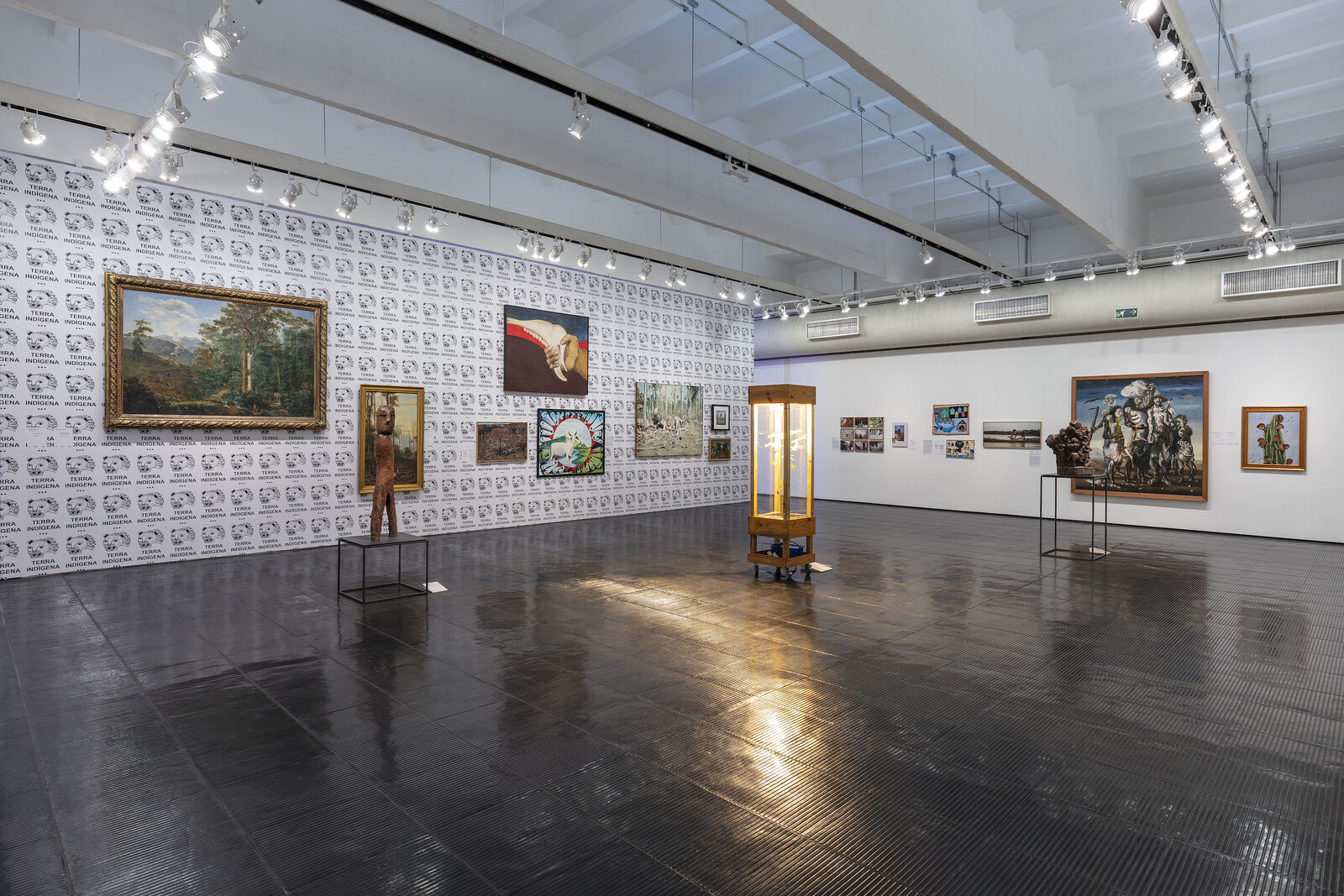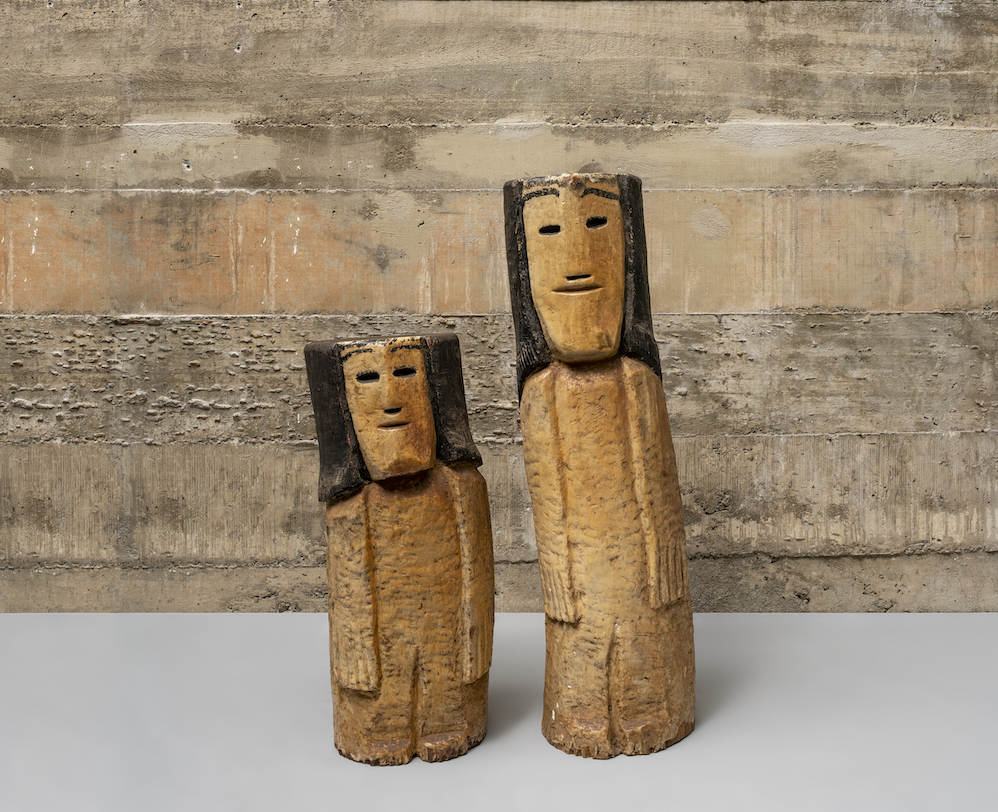Categories
Subjects
Authors
Artists
Venues
Locations
Calendar
Filter
Done
September 13, 2022 – Review
“Histórias Brasileiras”
Oliver Basciano

“Histórias Brasileiras” [Brazilian Stories] is a profoundly depressing show, a curatorial snapshot of a country, it would seem, at the end of its tether. It coincides with the closing months of Jair Bolsonaro’s grueling first term as the country’s president, opening just before the world’s fourth biggest democracy goes to the polls. The complaints and traumas presented in the exhibition are legion. That does not, however, necessarily make it a great exhibition.
Adherents of Bolsonarismo have long co-opted Brazil’s national flag. And so it is as a presumed rebuke that the curators present a series of reimagined versions of the blue, yellow, and green standard to open this sprawling exhibition (over 400 objects divided between eight thematic chapters, the first of which is titled “Flags”). Abdias Nascimento’s Okê Oxóssi (1970), in which the late artist and activist inserts symbols of Candomblé, the Afro-Brazilian religion, into the composition and palette of the original national design, subverts the European Christianity that has long held power in the country. It hangs alongside Mulambö’s Remembering Thy Noble Presence (2021), a funereal silhouette of the globe and diamond motif made from black plastic rubbish bags; and Leandro Vieira’s Brazilian Flag (2019), a rendition of the …
September 13, 2021 – Review
Conceição dos Bugres’s “The Nature of the World”
Oliver Basciano

Over a hundred pairs of inky-black eyes stare out of their glass vitrines. These are Conceição Freitas da Silva’s “bugres”: the diminutive figures that for over two decades until her death in 1984 the Brazilian artist carved from tree trunks and branches. The short smiles of some disarm, the longer grimaces of others give a more forlorn, or on occasion menacing, disposition. Their arms and legs are mostly demarcated by the slightest carved line, their heads flat-pated and running with the merest hint of neck into the stocky bodies. Their gender is indeterminate. Such was Conceição’s connection with the creatures that preoccupied her whole life—she made nothing else—she adopted the moniker Conceição dos [of] Bugres.
In the majority the bugres—a colonial-era racist slur for indigenous workers offensively perceived as “lazy buggers”—have a pale, yellowish, complexion that stems from the paraffin wax the artist used to decorate her carved figures. Most have a bob of straight painted black hair. Conceição had Kaingang heritage, an ethnicity native to southern Brazil: “I think that Indians have heads like that,” she said. “That’s the only way for it to come out.” Each of them possesses uniformity, to a point. Yet the longer you spend …